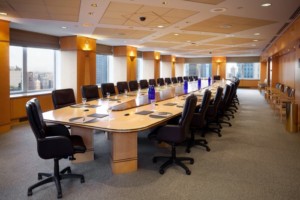
In Creativity Inc., Ed Catmull, the co-founder of Pixar, tells a story that resonated with me. It gave me a physical example to consider when thinking about the virtual spaces that I create with software development.
Pixar had a cultural goal of “hierarchy doesn’t matter”, but their weekly creative review meeting was held at long rectangular table. As the company grew the number of people in the meeting grew. Eventually there wasn’t enough space at the table and people had to sit around the edges of the room.
The executive group sat in the centre of the long rectangular table to ensure they could hear everything, and after awhile name cards were introduced so that executive team and senior team members had a seat at the table if they came late.
Practically this meant significant distance and head arching from those along the edges of the table or room, and name cards that seemed to communicate how important you were. You can imagine that the behavioural result didn’t lead to the free flow or ideas or a non-hierarchical culture.
Catmull and his leadership team didn’t recognise the problem with the rectangular table earlier because they didn’t have a problem with it.
Eventually Catmull happened to have a meeting in a room with a square shaped table and no name cards. They were surprised by the interaction and flow of creativity and ideas.
This story had two key takeaways for me that related to how I look at the psychological impact of the virtual spaces that I build within software products.
Empathy
Do I take time to sit in the chair at the end of the table or even away from the table and understand how the experience feels? Do I take time to shadow, observe and learn about not only functionality & efficiency gains but also how people feel in the product space?
Inclusive “Space”
In the case of a software product I think of space as the user interface, interaction, copy, and the opinion or “soul” of the product. This is space that people are going to spend potentially many hours of their life in. Is the space going to make them feel voiceless, and powerless?
Or is the space going to be inclusive and make them feel smart, empowered?


